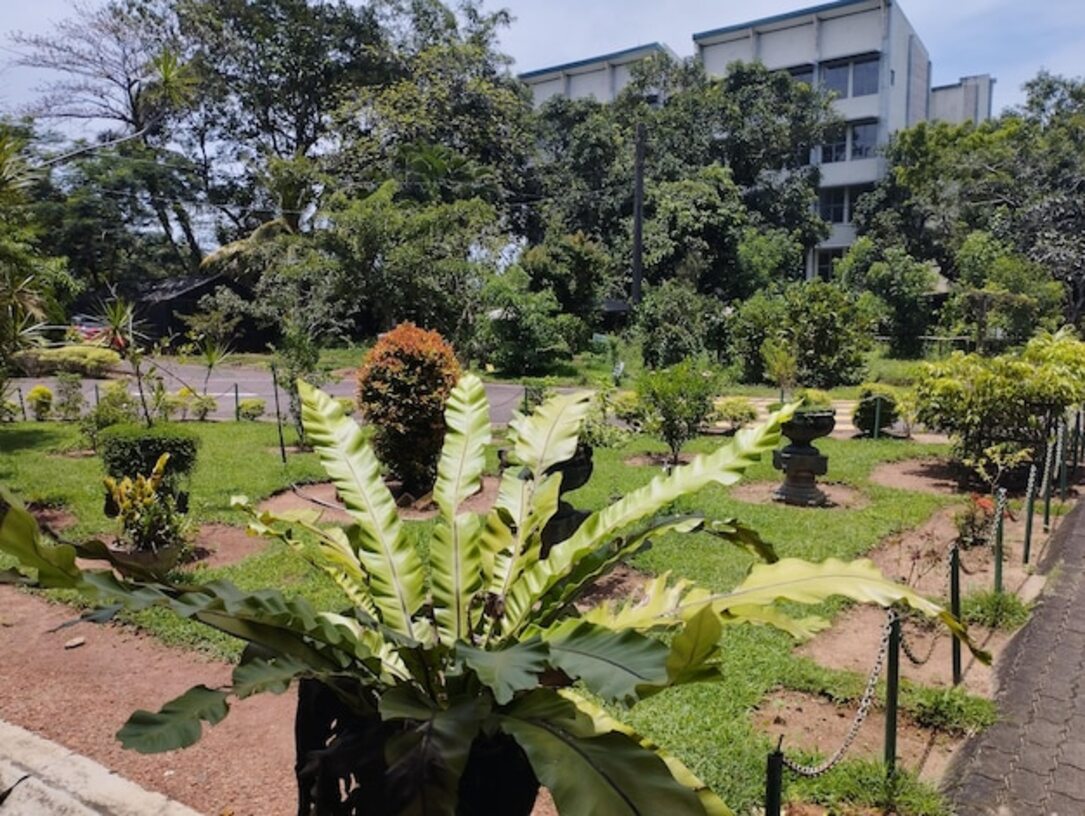Connecting with nature: green spaces in your condominium

Connecting with nature in your condominium is more than a desire; it is a necessity in our modern life. By incorporating green spaces, you not only beautify your surroundings but also promote well-being and connection with the environment. These natural corners can transform any condominium into a sanctuary of peace and harmony. In this article, we will explore how to integrate nature into your shared home, creating a healthier and more sustainable lifestyle.
The importance of green spaces in urban environments
The integration of green spaces in urban environments is essential for improving the quality of life of its inhabitants. In cities where concrete and asphalt dominate, green areas act as natural lungs that not only provide beauty but also help mitigate air pollution and noise. These spaces offer a refuge for local wildlife and promote biodiversity, resulting in healthier ecosystems within our communities. By incorporating gardens, patios, or small parks in condominiums, a more balanced and pleasant environment for everyone is encouraged.
In addition to their aesthetic and environmental value, green spaces have a direct impact on our physical and mental well-being. Studies have shown that spending time surrounded by nature reduces stress levels, improves mood, and increases creativity. In a condominium, having green areas can encourage physical activity among residents, whether through outdoor exercise or simply enjoying leisurely walks. These places become social meeting points where people can interact, strengthen community ties, and create a sense of belonging that is vital in urbanized environments.
2. Psychological benefits of having nature nearby
The presence of nature in our everyday environment offers significant psychological benefits that can enhance our quality of life. Studies have shown that simply being near green spaces reduces levels of stress and anxiety, promoting a sense of calm and overall well-being. The sight of plants, trees, and other forms of natural life activates the parasympathetic nervous system, helping us relax and recover from daily overwhelm. In a condominium, these small oases can become places where residents feel rejuvenated and connected to something greater than themselves.
Moreover, interacting with nature stimulates creativity and improves mood. Spending time outdoors or even enjoying a balcony filled with plants can be an inspiring source that fosters productivity and innovation. Green spaces invite people to pause, reflect, and appreciate the present moment, which can lead to greater personal and social satisfaction. Thus, promoting natural areas within the condominium not only enhances the landscape but also creates opportunities to strengthen relationships among neighbors by sharing experiences in a healthy and revitalizing environment.
3. Creative ideas for community gardens
Communities that wish to cultivate a sense of unity and connection can greatly benefit from the creation of community gardens. These spaces not only offer the opportunity to plant and harvest but also serve as a meeting point where neighbors can collaborate and share knowledge about gardening. You can propose a variety of plants, from herbs to colorful flowers, thus fostering ecological diversity and collective learning. Implementing gardening workshops or group workdays can be an excellent way to strengthen the relationship among residents while beautifying the common space.
Another creative idea is to incorporate artistic elements into the design of the community garden. Inviting residents to participate in creating murals or art installations with recycled materials can transform this space into an outdoor gallery. Additionally, consider the possibility of installing handmade benches or picnic tables where families can enjoy the natural surroundings while sharing moments together. These initiatives not only enrich the aesthetics of the garden but also promote a sense of belonging and pride among the members of the condominium, turning the garden into a vibrant place full of life and creativity.
4. Ideal plants for balconies and terraces in condominiums
Plants are an excellent way to add life and color to the balconies and terraces of condominiums, creating a cozy and revitalizing atmosphere. Some of the best options are succulents and cacti, which require little maintenance and are perfect for those looking for a resilient and attractive choice. Additionally, aromatic herbs like rosemary, basil, or cilantro not only beautify the space but also provide fresh ingredients for your meals. By choosing plants suitable for your local climate and the available space, you can create a small green oasis in your home.
Another ideal option for balconies and terraces is climbing plants like ivy or jasmine. These species not only add an attractive vertical touch but can also provide shade on sunny days if placed strategically. To bring a more tropical feel, consider including some dwarf palm trees or ferns that withstand exposure to sun and wind well. Incorporating hanging pots or planters can maximize the use of available space and transform any outdoor area into a natural refuge where you can enjoy the fresh air and the singing of birds.
5. How to design accessible green spaces for all residents
Designing accessible green areas for all residents of a condominium is essential to promote a sense of community and collective well-being. To achieve this, it is crucial to consider the diversity of needs and abilities of the inhabitants. Incorporating wide, well-marked paths, as well as adaptive urban furniture, allows everyone, including those with reduced mobility or the elderly, to enjoy the space without limitations. Furthermore, selecting native and resilient plants can facilitate the maintenance of the green area, ensuring it remains attractive and functional throughout the year.
Another key aspect in the design of these green areas is the creation of interactive zones that encourage active participation from residents. Spaces like community gardens, playgrounds, or small outdoor amphitheaters can be excellent meeting points where people gather and socialize. The inclusion of elements such as benches, picnic tables, and grills not only beautifies the environment but also invites people to spend more time outdoors. By designing these spaces with the intention of being inclusive and functional, the social fabric of the condominium can be strengthened while celebrating the beauty of nature in our daily lives.
6. Green spaces as a social meeting point
Green spaces in a condominium not only serve to beautify the environment but also become meeting points that encourage social interaction among neighbors. A well-designed garden or a small square with trees and benches can become the ideal setting for informal gatherings, community celebrations, or simply enjoying a pleasant chat outdoors. This type of gathering strengthens the bonds among residents, promoting a sense of community and belonging that is essential for a harmonious and collaborative environment.
Additionally, these green spaces act as a refuge where people can disconnect from daily stress and reconnect with nature. Imagine a place in your condominium filled with flowers, aromatic plants, and shaded areas where families can gather to play or read. By providing a welcoming and relaxing environment, neighbors are encouraged to leave their apartments and share experiences, thus creating collective memories that enrich community life. Green spaces are not just aesthetic areas; they are true catalysts for social well-being in the daily life of the condominium.
7. Maintaining biodiversity: native plants in your condominium
Biodiversity is essential for the balance of our ecosystems, and by choosing native plants for your condominium, you are contributing to their preservation. These species are adapted to the climate and soil conditions of your region, which means they require less water and care compared to exotic plants. By incorporating local flora into your green spaces, you not only beautify the environment but also support native wildlife, such as pollinators and birds, creating a microhabitat that encourages wildlife. This can be especially valuable in urban settings where natural spaces are limited.
In addition to their ecological benefits, native plants can offer multiple aesthetic and functional advantages. Their diversity of shapes and colors can transform yards or community gardens into vibrant and welcoming places. By involving residents in the selection and care of these plants, a sense of community and shared responsibility towards the environment is fostered. You can also organize workshops on sustainable gardening using local species, thereby promoting environmental education among the condominium residents. Ultimately, maintaining biodiversity through the use of native plants is a powerful action that connects people with their natural surroundings while enjoying the aesthetic and ecological benefits they provide.
8. Incorporating urban gardens in common spaces
Incorporating urban gardens into the common areas of a condominium is not only an excellent way to beautify the environment but also promotes sustainability and self-sufficiency among residents. These gardens can be shared spaces where neighbors collaborate in growing vegetables, herbs, and flowers. By doing so, a sense of community is fostered, as each person can contribute their knowledge and skills, creating an atmosphere of cooperation and mutual learning. Furthermore, growing fresh food on-site reduces dependence on industrial products and minimizes the ecological footprint by decreasing emissions associated with transportation.
The emotional and psychological benefits of having an urban garden are significant. Gardening has been shown to be an activity that reduces stress and improves overall well-being. In a world where we are all constantly connected to electronic devices, working in a garden provides an opportunity to disconnect and enjoy the outdoors. Residents can organize workshops on cultivation techniques or even cooking classes using ingredients harvested directly from the garden, thus promoting healthier eating habits. In this way, urban gardens not only enrich daily life within the condominium but also contribute to creating a more conscious and environmentally respectful lifestyle.
9. Sustainability as a lifestyle: recycling and composting
Sustainability has become a fundamental pillar for those seeking a more conscious and responsible lifestyle. In the context of a condominium, implementing practices such as recycling and composting not only promotes waste reduction but also strengthens the community by involving neighbors in a common cause. Designating specific areas for the collection of recyclable materials and establishing a composting system for organic waste can be an excellent way to educate and motivate residents to adopt more eco-friendly habits. This approach not only minimizes environmental impact but also creates a sense of belonging among the inhabitants of the condominium.
Integrating these sustainable practices into your space doesn't have to be complicated. You can start with small actions, such as placing clearly labeled containers for recycling in strategic locations or creating a community composter where everyone can contribute their fruit and vegetable scraps. Additionally, organizing workshops or educational activities about the importance of recycling and composting can be an effective way to encourage active participation and raise awareness about these vital topics. By making recycling and composting an integral part of daily life in your condominium, you will be contributing to a greener future while fully enjoying your natural spaces.
10. Inspiring examples of condominiums with successful green spaces
Green spaces in condominiums not only provide beauty and freshness but can also become true urban oases. An inspiring example is the condominium "Green Haven," where vertical gardens have been designed on the facades and a community park has been created on the rooftop. This space not only offers relaxation and recreation areas for residents but also features urban gardens where neighbors can grow their own plants and vegetables. The integration of these green areas fosters a sense of community and promotes sustainable living practices among its inhabitants, making the place a model to follow. Another highlighted case is the residential complex "EcoVista," which has successfully incorporated extensive green areas into its architectural design. With paths surrounded by native trees, natural ponds, and spaces for outdoor activities, this condominium invites residents to enjoy the outdoors without leaving home. Furthermore, rainwater harvesting systems have been implemented to maintain these green spaces, underscoring the importance of environmental care. These initiatives not only beautify the surroundings but also improve air quality and offer a peaceful refuge to escape the daily urban bustle.



